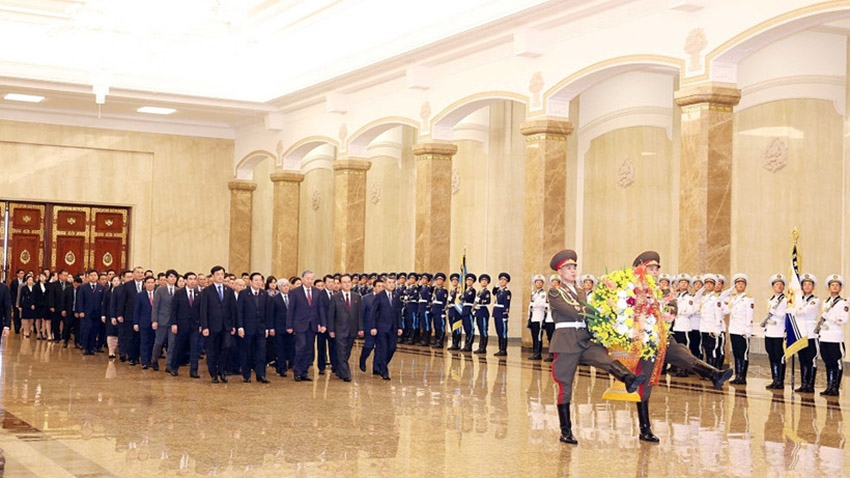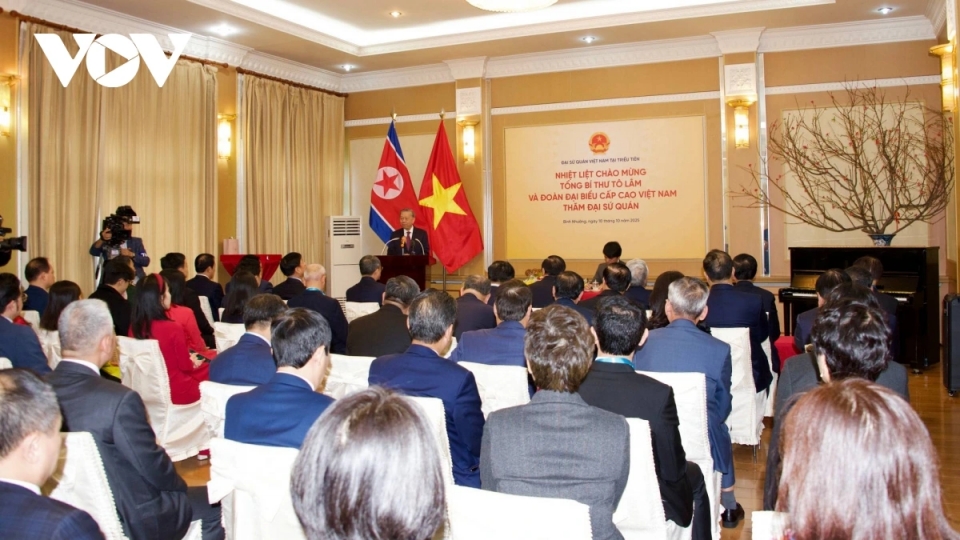General Secretary To Lam pays tribute to DPRK leaders
VOV.VN - A high-ranking Vietnamese delegation led by Party General Secretary To Lam on October 10 laid wreaths in tribute to President Kim Il-sung and General Secretary Kim Jong-il at the Kumsusan Palace of the Sun in Pyongyang, the Democratic People’s Republic of Korea (DPRK) as part of their visit to the country.

The Kumsusan Palace of the Sun is considered the most sacred memorial site in the DPRK. Initially used as the official workplace of President Kim Il-sung, the palace was later transformed into a mausoleum following his passing, and opened to the public in 1995. The embalmed body of Kim Jong-il, General Secretary of the Workers’ Party of Korea, was also placed there after his death.
In the guestbook, General Secretary To Lam wrote that the delegation was profoundly moved to pay tribute at the eternal resting place of President Kim Il-sung and General Secretary Kim Jong-il - two great leaders of the Korean people and long-standing, close friends and comrades of the Vietnamese Party, State, and people.
He emphasised that, during their lifetimes, President Kim Il-ung and General Secretary Kim Jong-il devoted themselves to the cause of national independence, freedom, and socialism for the Korean people, while also laying the foundation and nurturing the friendship and solidarity between the peoples of Vietnam and Korea.
He expressed Vietnam's deep gratitude for the tremendous contributions made by successive generations of Korean leaders, from President Kim Il-sung and General Secretary Kim Jong-il to current General Secretary and President Kim Jong-un, to the friendship with Vietnam. He affirmed Vietnam's commitment to further developing the cooperative and fraternal ties between the two countries, in the interest of both peoples and for peace and stability in the region and the wider world.
Later that day, General Secretary To Lam and the Vietnamese delegation visited Mangyongdae, the birthplace of President Kim Il-sung. The delegation toured the house where he was born and raised. In 1947, the site was officially recognised as a “Revolutionary Historic Site” and has since been preserved in its original traditional Korean architectural style, with wooden structures, thatched roofs, and simple household items, reflecting a modest yet patriotic and revolutionary upbringing.
The delegation also visited the Juche-oriented Musical Art Museum, which is regarded as a “national treasure” of the country’s music art. The museum showcases, in a comprehensive and visual manner, the history and development of revolutionary musical art in the DPRK, highlighting its role in inspiring the people in their struggle and national construction efforts.






